
 |
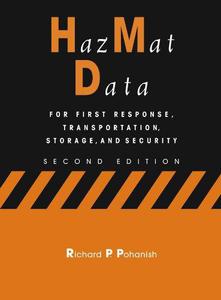 HazMat dаta: For First Response, Transportation, Storage, and Security By Richard P. Pohanish(auth.) 2004 | 1304 Pages | ISBN: 0471273287 | PDF | 49 MB The HazMat Data, 2nd Edition provides a detailed reference for emergency responders and people who transport chemicals. Considering the events of September 11, the book is especially oriented toward first responder and emergency management personnel. Additions to this new Second Edition include Spanish language synonyms for all entries, and an increased overall number of synonyms. New to this edition is information on chemical warfare (CW) agents and Weapons of Mass Destruction (WMD)-nerve gasses, blister agents/vesicants, "blood agents," choking/pulmonary agents, and crowd-control agents (tear gasses, pepper sprays, etc.)-that might be used as weapons of terrorism. It clearly explains symptoms of exposure and appropriate treatment for the exposure when available, and describes what to do in an emergency situation. The book also gives the NFPA hazard classifications, as well as chemical hazard class information. Newly updated, The HazMat Data, 2nd Editio provides a comprehensive, up-to-date summary of this vital information.Content: 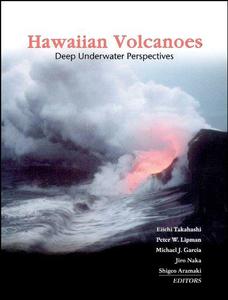 Hawaiian Volcanoes: Deep Underwater Perspectives By 2002 | 416 Pages | ISBN: 0875909876 | PDF | 80 MB Published by the American Geophysical Union as part of the Geophysical Monograph Series. In the summer of 1963, when a group of Japanese scientists arrived at the aged building of the Hawaiian Volcano Observatory, run by the U.S. Geological Survey, there began a program of cooperation and friendship between American and Japanese volcanologists that continues to the present. The late Professor Takeshi Minakami, a top volcano-physicist long involved in research at various volcanoes, including Asama, then the most active volcano in Japan, led the Japanese group. The time coincided with a changeover in Hawaii, from the pioneering volcanologic studies of Harold Stearns, Gordon Macdonald, and Jerry Eaton to more comprehensive research by younger volcanologists. The Japanese team was also fortunate enough to witness a rift zone eruption at Kilauea volcano (Alae eruption, July 1963), a direct, eye-opening encounter with a volcano plumbing system in action.Content: 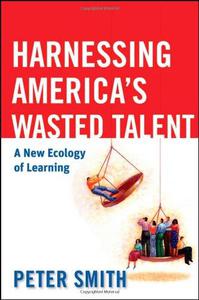 Harnessing America's Wasted Talent: A New Ecology of Learning By Peter Smith(auth.) 2010 | 200 Pages | ISBN: 0470538074 | PDF | 2 MB Increasing success rates in higher education requires a new approach towards effective teaching and learning. Harnessing America's Wasted Talent provides tools to make this happen by highlighting the flaws in higher education, like using only the orthodox college model, preventing opportunity and wasting talent for many students. This reference explores Second Life, iTunes University, and Web 2.0 to capitalize on the capacity of every learner.This resource is essential reading for every college leader and policy-makers to meet all of students' educational needs.Content: Chapter 1 Wasted Talent (pages 1-20): Chapter 2 Maxed Out: Why Colleges Can't Meet This Challenge (pages 21-34): Chapter 3 The Paradox of Personal Learning (pages 35-45): Chapter 4 Different Strokes for Different Folks (pages 47-66): Chapter 5 Learning is More Than Strictly Academic (pages 67-77): Chapter 6 You Can't Get There from Here (pages 79-90): Chapter 7 The End of Scarcity: Education's Emerging Long Tail (pages 91-112): Chapter 8 Game Changers: New Media and the Open Education Resource Movement (pages 113-134): Chapter 9 Reaching the Middle Third: Talent?Friendly Colleges for the Twenty?First Century (C21Cs) (pages 135-156): 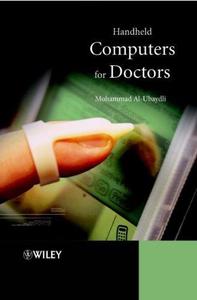 Handheld Computers for Doctors By Mohammad Al?Ubaydli(auth.) 2003 | 142 Pages | ISBN: 0470858990 | PDF | 2 MB This is the first book to address the uses of handheld computers within clinical practice and considers the many different possible applications of handheld computers in a medical environment. The book champions the idea that handheld computers have a significant role to play in the future of clinical practice. It shows why and how these devices can help reduce paperwork, and how to use the technology without waiting for the IT department's latest expensive, complicated and overdue solution. The book is in three sections:Explains that handhelds, far from futuristic gadgets, are today's technology benefiting clinicians around the world. The ten chapters guide the user through all possible applications of these machines. Looks at three teams that put the handhelds to different clinical uses. Explains the tools and techniques that are useful in introducing the technology to a group.If you work in hospital or community medicine, you can take advantage of technology that is affordable, powerful, easy and effective. Handheld computers can be used for education, administration and clinical practice, and in association with colleagues to support communication and teamwork.Content: Chapter one So, You'd Like a Handheld (pages 1-5): Chapter two Choosing Hardware (pages 7-12): Chapter three Choosing Software for Yourself (pages 13-16): Chapter four Organizing Your Life (pages 17-23): Chapter five Taking Lecture Notes (pages 25-29): Chapter six Keeping Track of Patient Details (pages 31-36): Chapter seven Medical References (pages 37-42): Chapter eight Reading Electronic Books (pages 43-46): Chapter nine Games for Ward Rounds (pages 47-51): Chapter ten Carrying the Web with You (pages 53-57): Chapter eleven Handhelds for Patients (pages 59-63): Dr Laura DeanChapter twelve Case 1 - The Haematology Department (pages 67-73): Chapter thirteen Case 2 - The General Practice Surgery (pages 75-84): Chapter fourteen Case 3 - The Acute Medicine Department (pages 85-98): Chapter fifteen Making Change Happen (pages 101-106): Chapter sixteen Talking to the IT Department (pages 107-111): Chapter seventeen Choosing Software for the Team (pages 113-116): Chapter eighteen Training (pages 117-119): Chapter nineteen Electronic Documents (pages 121-128): Chapter twenty Getting the Funding (pages 129-137):  Handbuch Technischer Lawinenschutz By 2011 | 479 Pages | ISBN: 3433029474 | PDF | 9 MB This book provides an overview of the fundamentals and classification of technical avalanche protection. It describes in detail the design, construction and maintenance of protection structures as well as temporary technical measures.Content: Chapter 1 Einfuhrung (pages 1-11): DI Siegfried Sauermoser and DI Dr. Florian Rudolf?MiklauChapter 2 Entwicklung der Lawinen und des Lawinenschutzes: Historischer Uberblick (pages 13-20): DI Siegfried Sauermoser, Dr. Markus Stoffel and Dipl. Bauing. ETH Stefan MargrethChapter 3 Lawinen: Entstehung und Wirkung (pages 21-62): DI Patrick Nairz, DI Siegfried Sauermoser, Dr. Karl Kleemayer, Dr. Karl Gabl, Dr. Markus Stoffel and Dipl. Bauing. ETH Stefan MargrethChapter 4 Grundlagen und Modelle der Lawinendynamik und Lawinenwirkung (pages 63-101): DI Siegfried Sauermoser, DI Matthias Granig, Dr. Karl Kleemayr and Dipl. Bauing. ETH Stefan MargrethChapter 5 Analyse, Bewertung und planliche Darstellung von Lawinengefahren (?risiken) (pages 103-128): DI Christoph Skolaut, DI Dr. Florian Rudolf?Miklau and Dr. Markus StoffelChapter 6 Planung von permanenten technischen Lawinenschutzma?nahmen (pages 129-158): DI Dr. Florian Rudolf?Miklau and DI Siegfried SauermoserChapter 7 Permanenter technischer Lawinenschutz: Schutzsysteme und Bautypen (pages 159-205): DI Wolfgang Schilcher, Dipl. Bauing. ETH Stefan Margreth, DI Siegfried Sauermoser, DI Christoph Skolaut, Mag. Michael Molk and DI Dr. Florian Rudolf?MiklauChapter 8 Permanenter Technischer Lawinenschutz: Bemessung und Konstruktion (pages 207-293): Dipl. Bauing. ETH Stefan Margreth, DDI. Dr. Jurgen Suda, Dr. Robert Hofmann, Dr. Peter Gauer, DI Siegfried Sauermoser, DI Wolfgang Schilcher and DI Christoph SkolautChapter 9 Bauausfuhrung und Erhaltungsmanagement (pages 295-362): DI Dr. Florian Rudolf?Miklau, DI. Wolfgang Schilcher, Dipl. Bauing. ETH Stefan Margreth, DI. Gebhard Walter and DDI. Dr. Jurgen SudaChapter 10 Gebaude? und Objektschutz (pages 363-377): DDI. Dr. Jurgen Suda, DI Siegfried Sauermoser, DI Christoph Skolaut and DI Dr. Florian Rudolf?MiklauChapter 11 Temporarer Lawinenschutz (pages 379-394): Dipl. Bauing. ETH Lukas Stoffel, DI Patrick Nairz and DI Siegfried SauermoserChapter 12 Lawinenbeobachtung (Monitoring) und Ereignisdokumentation (pages 395-408): Dr. Karl Kleemayr, DI. Patrick Nairz, DI Dr. Florian Rudolf?Miklau and Dr. Karl GablChapter 13 Technischer Lawinenschutz international: Zahlen und Fakten (pages 409-432): DI Dr. Florian Rudolf?Miklau, Dipl. Bauing. ETH Stefan Margreth, Francois Rapin, Bernhard Zenke, Yasuo Ishii, Rudolf Pollinger, Krister Kristensen, Tomas Johannesson, Pere Oller, Art Mears and Chris StethamChapter 14 Zusammenfassung und Ausblick (pages 433-434): DI Siegfried Sauermoser and DI Dr. Florian Rudolf?Miklau  Handbook of the Clinical Psychology of Ageing By Robert Woods, Linda Clare (eds.) 2008 | 626 Pages | ISBN: 0470012307 | PDF | 9 MB The first authoritative reference on clinical psychology and aging, the Handbook of the Clinical Psychology of Ageing was universally regarded as a landmark publication when it was first published in 1996. Fully revised and updated, the Second Edition retains the breadth of coverage of the original, providing a complete and balanced picture of all areas of clinical research and practice with older people. Contributions from the UK, North America, Scandinavia and Australiaprovide a broad overview of the psychology of aging, psychological problems (including depression, anxiety, psychosis, and dementia), the current social service context, and assessment and intervention techniques.Content: Chapter 1 Introduction (pages 1-14): Bob WoodsChapter 2 Ageing and Adaptation (pages 15-32): Peter G. Coleman and Ann O'HanlonChapter 3 Memory and Cognition in Ageing (pages 33-55): Boo JohanssonChapter 4 Ageing and Physical Health (pages 57-74): Valerie MorrisonChapter 5 Death, Dying and Bereavement (pages 75-94): Jan R. OyebodeChapter 6 Manifestations of Depression and Anxiety in Older Adults (pages 95-110): Inger Hilde NordhusChapter 7 Suicide and Attempted Suicide in Later Life (pages 111-119): Bob WoodsChapter 8 Psychological Trauma in Late Life: Conceptualization, Assessment and Treatment (pages 121-131): Steve DaviesChapter 9 Late Onset Psychosis (pages 133-143): Dr Linda Clare and Sharon GiblinChapter 10 Dementia as a Biopsychosocial Condition: Implications for Practice and Research (pages 145-159): Murna Downs, Dr Linda Clare and Elizabeth AndersonChapter 11 The Neuropsychology of Dementia: Alzheimer's Disease and other Neurodegenerative Disorders (pages 161-184): Robin G. MorrisChapter 12 Parkinson's Disease (pages 187-199): Peter HobsonChapter 13 Stroke (pages 201-217): Janet CockburnChapter 14 Sleep and Insomnia in Later Life (pages 219-233): Kevin MorganChapter 15 Values and Diversity in Working with Older People (pages 235-253): Kate AllanChapter 16 Family Caregiving: Research and Clinical Intervention 255 (pages 255-288): Steven H. Zarit and Anne B. EdwardsChapter 17 Residential Care (pages 289-309): Bob WoodsChapter 18 Elder Abuse and Neglect (pages 311-322): Alice Campbell Reay and Kevin D. BrowneChapter 19 Primary Care Psychology and Older People (pages 323-339): Gita E. BhutaniChapter 20 Ageing, Dementia and People with Intellectual Disability (pages 341-349): Chris Oliver, Dawn Adams and Sunny KalsyChapter 21 Palliative Care for People with Dementia: Principles, Practice and Implications (pages 351-359): Katherine Froggatt, Murna Downs and Neil SmallChapter 22 Neuropsychological Assessment of the Older Person (pages 361-383): Dr Linda ClareChapter 23 Assessing Function, Behaviour and Need (pages 385-414): Adrienne Little and Breid DohertyChapter 24 Assessing Mood, Wellbeing and Quality of Life (pages 415-427): Bob WoodsChapter 25 Capacity and Consent: Empowering and Protecting Vulnerable Older People (pages 429-436): Charles TwiningChapter 26 The Socio?Cultural Context in Understanding Older Adults: Contextual Adult Lifespan Theory for Adapting Psychotherapy (pages 437-456): Bob G. Knight and Cecilia PoonChapter 27 Cognitive Behaviour Therapy with Older People (pages 457-472): Ken LaidlawChapter 28 Psychoanalysis and Old Age (pages 473-487): Rachael DavenhillChapter 29 Systemic Interventions and Older People (pages 489-504): Alison Roper?HallChapter 30 Neuropsychological Rehabilitation in Later Life: Special Considerations, Contributions and Future Directions (pages 505-522): Margaret CrossleyChapter 31 Psychological Interventions with People with Dementia (pages 523-548): Bob Woods and Dr Linda ClareChapter 32 Interventions for Family Caregivers of People with Dementia (pages 549-569): Henry Brodaty and Karen BermanChapter 33 Challenging Behaviour in Dementia: A Psychosocial Approach to Intervention (pages 571-594): Mike Bird and Esme Moniz?CookChapter 34 Interventions at the Care Team Level (pages 595-611): Dawn Brooker 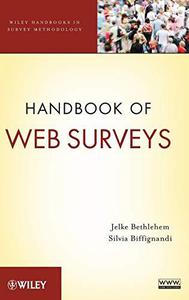 Handbook of Web Surveys By Jelke Bethlehem, Silvia Biffignandi(auth.) 2011 | 474 Pages | ISBN: 0470603569 | PDF | 9 MB BEST PRACTICES TO CREATE AND IMPLEMENTHIGHLY EFFECTIVE WEB SURVEYS Exclusively combining design and sampling issues, Handbook of Web Surveys presents a theoretical yet practical approach to creating and conducting web surveys. From the history of web surveys to various modes of data collection to tips for detecting error, this book thoroughly introduces readers to the this cutting-edge technique and offers tips for creating successful web surveys. The authors provide a history of web surveys and go on to explore the advantages and disadvantages of this mode of data collection. Common challenges involving under-coverage, self-selection, and measurement errors are discussed as well as topics including: Sampling designs and estimation procedures Comparing web surveys to face-to-face, telephone, and mail surveys Errors in web surveys Mixed-mode surveys Weighting techniques including post-stratification, generalized regression estimation, and raking ratio estimation Use of propensity scores to correct bias Web panels Real-world examples illustrate the discussed concepts, methods, and techniques, with related data freely available on the book's Website. Handbook of Web Surveys is an essential reference for researchers in the fields of government, business, economics, and the social sciences who utilize technology to gather, analyze, and draw results from data. It is also a suitable supplement for survey methods courses at the upper-undergraduate and graduate levels.Content: Chapter One The Road to Web Surveys (pages 1-36): Chapter Two About Web Surveys (pages 37-58): Chapter Three Sampling for Web Surveys (pages 59-95): Chapter Four Errors in Web Surveys (pages 97-146): Chapter Five Web Surveys and Other Modes of Data Collection (pages 147-188): Chapter Six Designing a Web Survey Questionnaire (pages 189-234): Chapter Seven Mixed?Mode Surveys (pages 235-280): Chapter Eight The Problem of Undercoverage (pages 281-302): Chapter Nine The Problem of Self?Selection (pages 303-327): Chapter Ten Weighting Adjustment Techniques (pages 329-384): Chapter Eleven Use of Response Propensities (pages 385-418): Chapter Twelve Web Panels (pages 419-457):
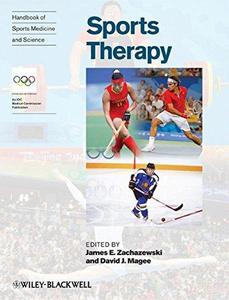 Handbook of Sports Medicine and Science: Sports Therapy Services: Organization and Operations By 2012 | 133 Pages | ISBN: 1118275772 | PDF | 3 MB Handbook of Sports Therapy Services: Organization and Operations is a practical guide, appropriate for each member of the multi-disciplinary "Sports Therapy" team, to establishing and effectively delivering the diverse therapy services required for athletes at international, national, and regional sporting events.Content: Chapter 1 Sports therapy-Who? What? When? Where? Why? and How? (pages 1-8): James E. Zachazewski and David J. MageeChapter 2 A history of sports medicine and sports therapy (pages 9-18): James E. Zachazewski, Arthur J. Boland and Nicola PhillipsChapter 3 The role and importance of the sports therapist: pre?event, event, and post?event (pages 19-24): Suzanne Werner, Peter Drugge, Tommy Eriksson, Asa Lonnqvist, Ulrika Tranaeus and Lotta WillbergChapter 4 Hosting international Olympic events: providing host therapy services at major games (pages 25-40): Randy GoodmanChapter 5 Pre?Olympic team travel: logistical and treatment considerations (pages 41-47): Masaki Katayose and David J. MageeChapter 6 Olympic event: logistical and treatment considerations (pages 48-67): Nicola Phillips and Caryl BeckerChapter 7 The importance of communication: understanding the importance of the event to the athlete, coach, and others (pages 68-78): Bill Moreau and Peter TooheyChapter 8 Considerations for working with professional athletes versus nonprofessional amateur athletes during Olympic events (pages 79-90): Sergio T. Fonseca, Juliana Melo Ocarino, Thales Rezende Souza, Anderson Aurelio da Silva, Jose Roberto Prado, Natalia Franco Netto Bittencourt and Luciana De Michelis MendoncaChapter 9 To compete or not to compete following injury during Olympic events (pages 91-102): Tony WardChapter 10 Sports nutrition and therapy (pages 103-116): Louise Burke and Ron Maughan  Handbook of Seafood Quality, Safety and Health Applications By 2010 | 570 Pages | ISBN: 1405180706 | PDF | 18 MB The global market for seafood products continues to increase year by year. Food safety considerations are as crucial as ever in this sector, and higher standards of quality are demanded even as products are shipped greater distances around the world. The current global focus on the connection between diet and health drives growth in the industry and offers commercial opportunities on a number of fronts. There is great interest in the beneficial effects of marine functional compounds such as omega-3 polyunsaturated fatty acids. Seafoods are well-known as low calorie foods, and research continues into the nutritional effects on, for example, obesity and heart disease. In addition, by-products of marine food processing can be used in nutraceutical applications. This book is a resource for those interested in the latest advances in the science and technology of seafood quality and safety as well as new developments in the nutritional effects and applications of marine foods. It includes chapters on the practical evaluation of seafood quality; novel approaches in preservation techniques; flavour chemistry and analysis; textural quality and measurement; packaging; the control of food-borne pathogens and seafood toxins. New research on the health-related aspects of marine food intake are covered, as well as the use of seafoods as sources of bioactives and nutraceuticals. The book is directed at scientists and technologists in academia, government laboratories and the seafood industries, including quality managers, processors and sensory scientists.Content: Chapter 1 Seafood Quality, Safety, and Health Applications: An Overview (pages 1-10): Associate Professor Cesarettin Alasalvar, Professor Fereidoon Shahidi, Professor Kazuo Miyashita and Dr Udaya WanasundaraChapter 2 Practical Evaluation of Fish Quality by Objective, Subjective, and Statistical Testing (pages 11-28): Associate Professor Cesarettin Alasalvar, John M. Grigor and Zulfiqur AliChapter 3 Sensory Evaluation of Fish Freshness and Eating Qualities (pages 29-38): David P. GreenChapter 4 Sensometric and Chemometric Approaches to Seafood Flavour (pages 39-49): Kae Morita and Tetsuo AishimaChapter 5 Instrumental Analysis of Seafood Flavour (pages 50-67): Hun Kim and Keith R. CadwalladerChapter 6 Quality Assessment of Aquatic Foods by Machine Vision, Electronic Nose, and Electronic Tongue (pages 68-81): Figen Korel and Murat O. BalabanChapter 7 Effects of Nutrition and Aquaculture Practices on Fish Quality (pages 82-95): Kriton GrigorakisChapter 8 Lipid Oxidation, Odour, and Colour of Fish Flesh (pages 96-108): Jeong?Ho Sohn and Toshiaki OhshimaChapter 9 Blackening of Crustaceans during Storage: Mechanism and Prevention (pages 109-118): Kohsuke Adachi and Takashi HirataChapter 10 Quality of Freshwater Products (pages 119-129): Masaki KaneniwaChapter 11 Texture Measurements in Fish and Fish Products (pages 130-138): Zulema Coppes?PetricorenaChapter 12 Quality and Safety of Packaging Materials for Aquatic Products (pages 139-155): T. K. Srinivasa Gopal and C. N. Ravi ShankarChapter 13 Fish Mince: Cryostabilization and Product Formulation (pages 156-170): Chong M. LeeChapter 14 New Trends in Species Identification of Fishery Products (pages 171-180): Hartmut RehbeinChapter 15 An Emerging Powerful Technique: NMR Applications on Quality Assessments of Fish and Related Products (pages 181-193): Somer BekiroggluChapter 16 Food?Borne Pathogens in Seafood and Their Control (pages 195-205): Dominic Kasujja Bagenda and Koji YamazakiChapter 17 Novel Approaches in Seafood Preservation Techniques (pages 206-216): Fatih Ozogul, Yesim Ozogul and Esmeray Kuley BogaChapter 18 Essential Oils: Natural Antimicrobials for Fish Preservation (pages 217-225): Barakat S. M. Mahmoud and Professor Kazuo MiyashitaChapter 19 Rapid Methods for the Identification of Seafood Micro?Organisms (pages 226-236): Brian H. Himelbloom, Alexandra C. M. Oliveira and Thombathu S. ShettyChapter 20 Using Predictive Models for the Shelf?Life and Safety of Seafood (pages 237-250): Graham C. FletcherChapter 21 Mathematical Modelling of Shrimp Cooking (pages 251-260): Ferruh Erdoggdu and Murat O. BalabanChapter 22 Transgenic/Transgenic Modified Fish (pages 261-274): Jenn?Kan Lu, Jen?Leih Wu and Meng?Tsan ChiangChapter 23 Molecular Detection of Pathogens in Seafood (pages 275-289): Iddya Karunasagar and Indrani KarunasagarChapter 24 DNA?Based Detection of Commercial Fish Species (pages 290-302): Rosalee S. Rasmussen and Michael T. MorrisseyChapter 25 Seafoods and Environmental Contaminants (pages 303-316): Beraat Ozcelik, Umran Uygun and Banu BayramChapter 26 Oxidation and Stability of Food?Grade Fish Oil: Role of Antioxidants (pages 317-334): Weerasinghe M. Indrasena and Colin J. BarrowChapter 27 Global Legislation for Fish Safety and Quality (pages 335-347): Ioannis S. Arvanitoyannis and Persefoni TserkezouChapter 28 Food Safety and Quality Systems (ISO 22000:2005) in the Seafood Sector (pages 348-365): Ioannis S. ArvanitoyannisChapter 29 Health Benefits Associated with Seafood Consumption (pages 367-379): Maria Leonor Nunes, Narcisa Maria Bandarra and Irineu BatistaChapter 30 A New Approach to the Functional Improvement of Fish Meat Proteins (pages 380-389): Hiroki SaekiChapter 31 Value Addition to Seafood Processing Discards (pages 390-401): Sachindra M. Nakkarike, Bhaskar Narayan, Masashi Hosokawa and Professor Kazuo MiyashitaChapter 32 Role of Marine Foods in Prevention of Obesity (pages 402-413): Shigeru NakajimaChapter 33 Microencapsulation, Nanoencapsulation, Edible Film, and Coating Applications in Seafood Processing (pages 414-422): Subramaniam Sathivel and Don KramerChapter 34 Fish Oil Extraction, Purification, and its Properties (pages 423-432): Subramaniam SathivelChapter 35 Nutraceutical Quality of Shellfish (pages 433-443): Bonnie Sun PanChapter 36 Marine Oils and other Marine Nutraceuticals (pages 444-454): Professor Fereidoon Shahidi and Associate Professor Cesarettin AlasalvarChapter 37 Nutraceuticals and Bioactives from Marine Algae (pages 455-463): S. P. J. Namal Senanayake, Naseer Ahmed and Jaouad FichtaliChapter 38 Preparative and Industrial?Scale Isolation and Purification of Omega?3 Polyunsaturated Fatty Acids from Marine Sources (pages 464-475): Dr Udaya WanasundaraChapter 39 Marine Oil Processing and Application in Food Products (pages 476-484): Professor Fereidoon ShahidiChapter 40 Bioactive Peptides from Seafood and their Health Effects (pages 485-493): Anusha G. P. Samaranayaka and Eunice C. Y. Li?ChanChapter 41 Antioxidative Properties of Fish Protein Hydrolysates (pages 494-507): Sivakumar Raghavan, Hordur G. Kristinsson, Gudjon Thorkelsson and Ragnar JohannssonChapter 42 Functional and Nutraceutical Ingredients from Marine Macroalgae (pages 508-521): Tao Wang, Gu?run Olafsdottir, Rosa Jonsdottir, Hordur G. Kristinsson and Ragnar JohannssonChapter 43 Seafood Enzymes and their Potential Industrial Application (pages 522-535): Swapna C. Hathwar, Amit K. Rai, Sachindra M. Nakkarike and Bhaskar Narayan 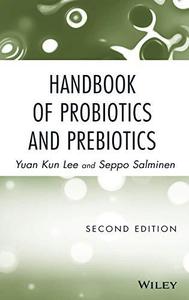 Handbook of Probiotics and Prebiotics By Yuan Kun Lee, Seppo Salminen (eds.) 2009 | 608 Pages | ISBN: 0470135441 | PDF | 5 MB Since the publication of the first edition in 1999, the science of probiotics and prebiotics has matured greatly and garnered more interest. The first handbook on the market, Handbook of Probiotics and Prebiotics: Second Edition updates the data in its predecessor, and it also includes material topics not previously discussed in the first edition, including methods protocols, cell line and animal models, and coverage of prebiotics. The editors supplement their expertise by bringing in international experts to contribute chapters. This second edition brings together the information needed for the successful development of a pro- or prebiotic product from laboratory to market.Content: Chapter 1 Probiotic Microorganisms (pages 1-176): Yuan Kun Lee, Abelardo Margolles, Baltasar Mayo, Patricia Ruas?Madiedo, Miguel Gueimonde, Clara de los Reyes?Gavilan, Toni A Chapman, James JC Chin, Ross Crittenden, Diana Donohue and William Tien Hung ChangChapter 2 Selection and Maintenance of Probiotic Microorganisms (pages 177-187): Yuan Kun LeeChapter 3 Genetic Modification of Probiotic Microorganisms (pages 189-255): Koji Nomoto, Mayumi Kiwaki and Hirokazu TsujiChapter 4 Role of Probiotics in Health and Diseases (pages 257-375): M. Carmen Collado, J.M. Laparra, Rafael Frias, Yuan Kun Lee, Seppo Salminen, Allan Lim and Hai?Meng TanChapter 5 Mechanisms of Probiotics (pages 377-440): Sampo Lahtinen, Arthur Ouwehand, M. Carmen Collado, Seppo Salminen, Satu Vesterlund, Mimi Tang and Reetta SatokariChapter 6 Commercially Available Human Probiotic Microorganisms (pages 441-532): Camilla Hoppe, Charlotte Nexmann Larsen, Rangne Fonden, Ulla Svensson, Arthur Ouwehand, Sampo Lahtinen, Mayumi Kiwaki, Koji Nomoto, Katsunori Kimura, Dorte Eskesen, Maija Saxelin, Kajsa Kajander, Gregor Reid, Andrew W. Bruce, Paivi Nurminen, Riitta Korpela, Hirokazu Tsuji, Jin?Zhong Xiao and Seppo SalminenChapter 7 Prebiotics (pages 533-581): Ross Crittenden and Martin J. Playne |